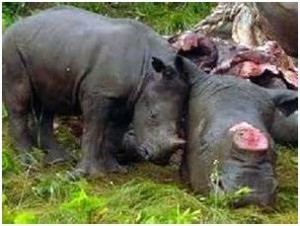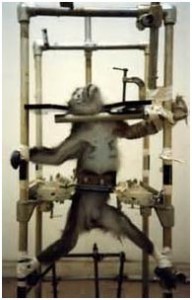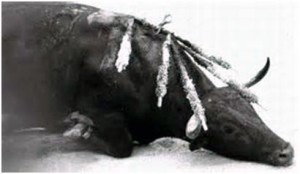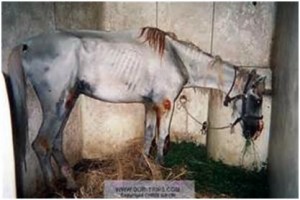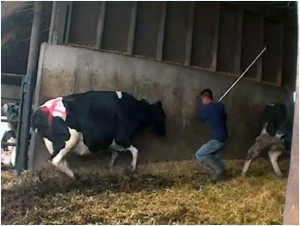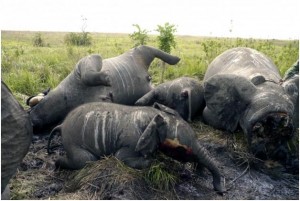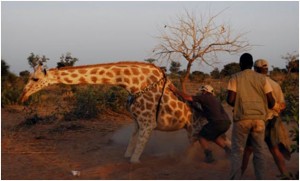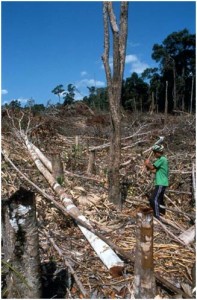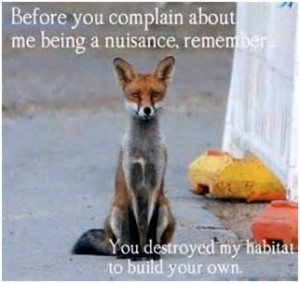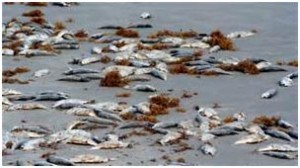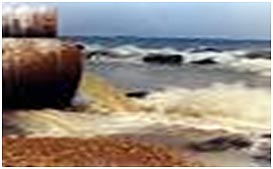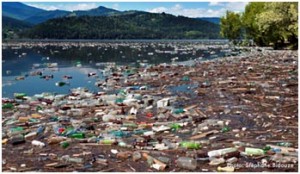There was a post earlier in the series that addressed global ecology. The post focused on one’s philosophy about living things and the ecological needs these many things may have that we ignore. We focus on only our human need without regard for other forms of life. We spill oil, spread disease, destroy millions of acres of habitat to make homes and highways.
There are very few positive examples of note, perhaps the Glenwood Canyon Project on I-70 west of Denver, Colorado. Citizens pressured the Department of Transportation into saving the beauty of the canyon and the Colorado River, to respect the need of wildlife to move back and forth across the canyon, and to make I-70 almost disappear into the canyon walls. The project was a true integration of human need, wildlife need and respect for the sanctity of nature.
Now, we deal with the darker side of the human relationship with wildlife and species of every kind. Humans, with violence, psychopathic vengeance, and intense selfishness, deliberately attack nature’s creatures. Below is a table and pictorial display that may not be pleasant but will show that this form of human behavior is not just self centered but demonstrates a malfunction in Homo sapiens that endangers the planet itself.
Endangered Species List
| Common name | Scientific name | Conservation status ↓ |
| Amur Leopard | Panthera pardus orientalis | Critically Endangered |
| Black Rhino | Diceros bicornis | Critically Endangered |
| Cross River Gorilla | Gorilla gorilla diehli | Critically Endangered |
| Hawksbill Turtle | Eretmochelys imbricata | Critically Endangered |
| Javan Rhino | Rhinoceros sondaicus | Critically Endangered |
| Leatherback Turtle | Dermochelys coriacea | Critically Endangered |
| Mountain Gorilla | Gorilla beringei beringei | Critically Endangered |
| Pangolin | Critically Endangered | |
| Saola | Pseudoryx nghetinhensis | Critically Endangered |
| South China Tiger | Panthera tigris amoyensis | Critically Endangered |
| Sumatran Elephant | Elephas maximus sumatranus | Critically Endangered |
| Sumatran Orangutan | Pongo abelii | Critically Endangered |
| Sumatran Rhino | Dicerorhinus sumatrensis | Critically Endangered |
| Sumatran Tiger | Panthera tigris sumatrae | Critically Endangered |
| Vaquita | Phocoena sinus | Critically Endangered |
| Western Lowland Gorilla | Gorilla gorilla gorilla | Critically Endangered |
| Yangtze Finless Porpoise | Neophocaena asiaeorientalis ssp. asiaeorientalis | Critically Endangered |
| African Wild Dog | Lycaon pictus | Endangered |
| Amur Tiger | Panthera tigris altaica | Endangered |
| Asian Elephant | Elephas maximus indicus | Endangered |
| Bengal Tiger | Panthera tigris tigris | Endangered |
| Black Spider Monkey | Ateles paniscus | Endangered |
| Black-footed Ferret | Mustela nigripes | Endangered |
| Blue Whale | Balaenoptera musculus | Endangered |
| Bluefin Tuna | Thunnus spp | Endangered |
| Bonobo | Pan paniscus | Endangered |
| Bornean Orangutan | Pongo pygmaeus | Endangered |
| Borneo Pygmy Elephant | Elephas maximus borneensis | Endangered |
| Chimpanzee | Pan troglodytes | Endangered |
| Eastern Lowland Gorilla | Gorilla beringei graueri | Endangered |
| Fin Whale | Balaenoptera physalus | Endangered |
| Galápagos Penguin | Spheniscus mendiculus | Endangered |
| Ganges River Dolphin | Platanista gangetica gangetica | Endangered |
| Giant Panda | Ailuropoda melanoleuca | Endangered |
| Green Turtle | Chelonia mydas | Endangered |
| Hector’s Dolphin | Cephalorhynchus hectori | Endangered |
| Humphead Wrasse | Cheilinus undulatus | Endangered |
| Indian Elephant | Elephas maximus indicus | Endangered |
| Indochinese Tiger | Panthera tigris corbetti | Endangered |
| Indus River Dolphin | Platanista minor | Endangered |
| Loggerhead Turtle | Caretta caretta | Endangered |
| Malayan Tiger | Panthera tigris jacksoni | Endangered |
| North Atlantic Right Whale | Eubalaena glacialis | Endangered |
| Orangutan | Pongo abelii, Pongo pygmaeus | Endangered |
| Sea Lions | Zalophus wollebaeki | Endangered |
| Sei Whale | Balaenoptera borealis | Endangered |
| Snow Leopard | Panthera uncia | Endangered |
| Sri Lankan Elephant | Elephas maximus maximus | Endangered |
| Tiger | Endangered | |
| Whale | Balaenoptera, Balaena, Eschrichtius, and Eubalaen | Endangered |
| Common name | Scientific name | Conservation status ↓ |
| African Elephant | Loxodonta africana | Vulnerable |
| Bigeye Tuna | Thunnus obesus | Vulnerable |
| Dugong | Dugong dugon | Vulnerable |
| Forest Elephant | Vulnerable | |
| Giant Tortoise | Vulnerable | |
| Great White Shark | Carcharodon carcharias | Vulnerable |
| Greater One-Horned Rhino | Rhinoceros unicornis | Vulnerable |
| Irrawaddy Dolphin | Orcaella brevirostris | Vulnerable |
| Marine Iguana | Amblyrhynchus cristatus | Vulnerable |
| Olive Ridley Turtle | Lepidochelys olivacea | Vulnerable |
| Polar Bear | Ursus maritimus | Vulnerable |
| Red Panda | Ailurus fulgens | Vulnerable |
| Savanna Elephant | Loxodonta africana africana | Vulnerable |
| Southern rockhopper penguin | Eudyptes chrysocome | Vulnerable |
| Whale Shark | Rhincodon typus | Vulnerable |
| Albacore Tuna | Thunnus alalunga | Near Threatened |
| Beluga | Delphinapterus leucas | Near Threatened |
| Greater Sage-Grouse | Centrocercus urophasianus | Near Threatened |
| Jaguar | Panthera onca | Near Threatened |
| Monarch Butterfly | Danaus plexippus | Near Threatened |
| Mountain Plover | Charadrius montanus | Near Threatened |
| Narwhal | Monodon monoceros | Near Threatened |
| Plains Bison | Bison bison bison | Near Threatened |
| White Rhino | Ceratotherium simum | Near Threatened |
| Yellowfin Tuna | Thunnus albacares | Near Threatened |
| Arctic Fox | Vulpes lagopus | Least Concern |
| Arctic Wolf | Canis lupus arctos | Least Concern |
| Bowhead Whale | Balaena mysticetus | Least Concern |
| Brown Bear | Ursus arctos | Least Concern |
| Common Bottlenose Dolphin | Least Concern | |
| Gray Whale | Eschrichtius robustus | Least Concern |
| Macaw | Ara ararauna | Least Concern |
| Pronghorn | Antilocarpa americana | Least Concern |
| Skipjack Tuna | Katsuwonus pelamis | Least Concern |
| Swift Fox | Vulpes velox | Least Concern |
| Amazon River Dolphin | Scientific Name Inia geoffrensis | Noted stress |
| Dolphins and Porpoises | Noted stress | |
| Elephant | Noted stress | |
| Gorilla | Gorilla gorilla and Gorilla beringei | Noted stress |
| Pacific Salmon | Noted stress | |
| Penguin | Spheniscidae | Noted stress |
| Poison Dart Frog | Dendrobates species | Noted stress |
| Rhino | Noted stress | |
| Sea Turtle | Cheloniidae and Dermochelyidae families | Noted stress |
| Seals | Noted stress | |
| Shark | Noted stress | |
| Sloth | Noted stress | |
| Tree Kangaroo | Dendrolagus sp. | Noted stress |
| Tuna | Thunnus and Katsuwonus species | Noted stress |
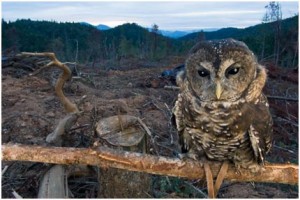 There are many more brutal and upsetting photographs and stories – too terrible to use. The point is made that humans allow their planet’s ecology to be destroyed through favorable laws for factory farmers, unenforced standards for treatment of pets, livestock and experimentation, poaching for a single part of an animal, deliberate brutality, uncontrolled and indifferent destruction of whole ecological environments – wiping out thousands of plants, insects, animals, fish, amphibians, reptiles and birds – all in one purposeful effort without regard for the fact that we are destroying our own ecology. The short gain of profit and self gratification is metaphorical to the short existence of Homo sapiens in Earth’s history.
There are many more brutal and upsetting photographs and stories – too terrible to use. The point is made that humans allow their planet’s ecology to be destroyed through favorable laws for factory farmers, unenforced standards for treatment of pets, livestock and experimentation, poaching for a single part of an animal, deliberate brutality, uncontrolled and indifferent destruction of whole ecological environments – wiping out thousands of plants, insects, animals, fish, amphibians, reptiles and birds – all in one purposeful effort without regard for the fact that we are destroying our own ecology. The short gain of profit and self gratification is metaphorical to the short existence of Homo sapiens in Earth’s history.
Those who study anthropology and population predict that human population will double by the year 2100. Science and technology will scramble to keep up with growth but the planet is no larger, perhaps less cooperative, and humans may have shattered the very ecology that keeps them alive.
Without doubt, human misbehavior toward its own environs, which includes the species above and their habitats, is too destructive to lay blame on any one ecology or on population explosion. To be clear, these animals are part of our habitat. We are destroying ourselves. Elizabeth Kolbert is right. WE will bring about our own extinction.
Of all the global threats in this series, including war, corporatism, dysfunctional government, cultural decay, organized greed – ecology is the most pressing crisis. There is a famous Cree proverb that goes,
“Only when the last tree has died, the last river been poisoned, and the last fish been caught will we realize we cannot eat money.”
The mariner spoke of the good fortune of having his town remove three of his six large Ash trees two weeks ago. As fortune would have it, two days ago the last three were victims of a horrendous thunderstorm. His yard stands bare, now – the remaining logs and debris lying about. The trees gave the property character and timeless sustainability. Now, it is naked. The squirrels scramble about the debris confused and homeless; the grackles and robins no longer sit in branches noisily complaining; the doves sit on the rooftop of the house; where to go? He felt a bit of melancholy for the animals. The mariner’s trees were the victim of nature’s way. How terrible it would have been to watch humans deliberately destroy this tiny eco-culture with bulldozers and burning piles of trees still alive – for the useless reason of man’s unfeeling will.
Advocacy at home in behalf of species and their habitats is the hardest advocacy of all. The reader is a policeman, a saint, a restorer of good. Not tomorrow. Now. With the spirit of a Knight Templar, the intensity of Thor, and the unyielding will of God Almighty, the reader must pursue action:
- Belong to an organization that defends our many habitats and creatures. There are many. Choose one and contribute what you can. The mariner suggests World Wildlife Fund or others very similar in commitment and format. Pick one the reader can believe in and trust. Your two hands and Knight Templar spirit are not enough; you must join the activists.
- Never waiver from your disciplined manner. A tightly chained dog? Report it to a humane society – today. Obviously abused or under fed animals? Report it. Not tomorrow. Today!
- Absorb news and information with a highly sensitive awareness of the impact on the world’s many ecologies. The gibbon will disappear within a decade because of bulldozers and housing. The reader must act sooner and with greater force (we are dealing with Congressmen, you know) to prevent destruction of land and water habitats. Three cheers for Greenpeace; they are our navy seals. Three cheers for those who lay their body on the line in front of bulldozers and backhoes; they are our ground troops.
- Adopt an endangered creature. The reader must become a genuine guardian. Learn everything the reader can about the creature, its necessary ecosystem and be acutely aware of human imposition.
- The next vacation the reader takes, use it to travel to the land of the reader’s creature; do what one can with hands on the situation.
- Be an advocate. Solicit legislation; go to where the action is and make something happen.
Does the mariner sound melodramatic? Perhaps. But it must be clear that not only is the reader saving specie ecologies, the reader is saving the human race. Time is much, much shorter than one may think.
Ancient Mariner


